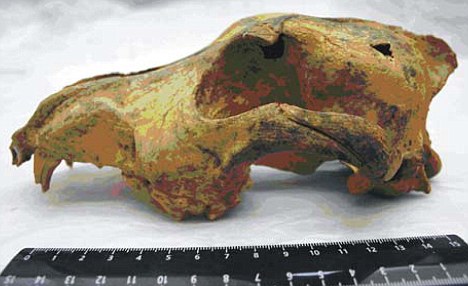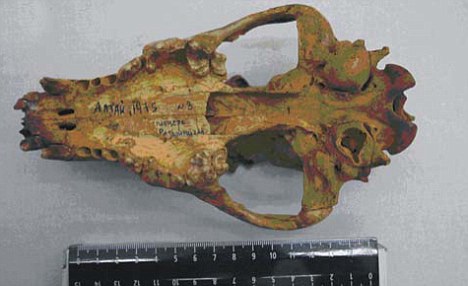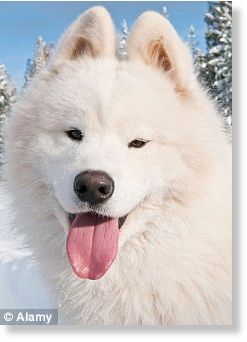The well-preserved skull was found in a cave in the Siberian Altai mountains by an international team of archaeologists.
The specimen comes from an animal that was alive shortly before the last ice age, and shows very few characteristics of modern dogs.


The archaeologists have detected that while its snout is similar in size to that of Greenland dogs found 1,000 years ago, it has teeth that would have resembled wild European wolves.
And they say that the dog also shows early signs of domestication, but added that man's loyalty to the animals was also tested when times were tough.
Dr Susan Crockford of Pacific Identifications, who was one of the authors of the study that appears in journal Plos One, explained to the BBC: 'The wolves were not deliberately domesticated, the process of making a wolf into a dog was a natural process.'
'At this time, people were hunting animals in large numbers and leaving large piles of bones behind, and that was attracting the wolves.'
Among the wolves that were attracted to the bones, the animals that were most curious and least fearful would show the most 'dog-like' characteristics.
They would often be smaller than others with wider snouts and more teeth.
The animals would also have been keen to clean up scraps off the bones they found and useful for fending off predators.
However it appears that when the ice age hit the animals became less useful and the relationship between animal and human ended.
Scientists suggest that this may have been because food was in short supply.
This process set back the domestication of dogs by as much as 20,000 years according to Dr Crawford.
It also meant the competition for food between the wolves and humans continued.




Reader Comments
to our Newsletter